The lack of diversity in the publishing industry has ramifications for the extent to which people of color and women are not solely getting represented, but also represented well, in complex ways. This piece was a tad encouraging, but mostly discouraging. Although we need to put pressure on the industry to be more inclusive, perhaps self-publishing in and with our communities is the way to go for now for awhile until matters improve in this regard. Just a thought.
Thanks to Tony Diaz for sharing.
-Angela
The PW Publishing Industry Salary Survey, 2018
The industry made small improvements on hot-button issues such as pay disparity and workforce diversification in 2017
Nov 09, 2018
Change comes slowly to the publishing industry. Despite years of discussion about the need to bring more people of color into the workforce, 86% of respondents to PW’s 2017 salary and jobs survey were white, down 1 percentage point from 2016. (The annual survey was sent out to employees of publishing companies this summer, and we received 664 responses.) There was one encouraging sign in the survey regarding diversification efforts: nonwhite respondents with less than three years of experience accounted for 19% of all nonwhite respondents, whereas white respondents with the same amount of experience made up only 9% of white respondents—an indication, perhaps, that publishing is starting to attract young people of color.
Diversifying the workforce seems to be more important to people of color than it is to white industry members. Though 53% of nonwhite respondents said strides have been made in diversifying publishing’s ranks, 38% said no progress has been made, and only 9% said they don’t know whether things have improved. Among white respondents, 46% said that improvements have been made, but 31% said they don’t know how diversity was faring. In terms of improving the diversity of titles, 78% of all respondents said improvement has been made, with more white respondents (79%) seeing things in a favorable light than people of color (73%). A much higher portion of nonwhite respondents (20%) than white respondents (6%) said they feel no improvement in title diversity has been made.
Another consistent feature of publishing’s workforce revealed by our survey has been the pay gap between men and women. In 2017, the average salary for men who responded to the survey was $87,000, compared to $60,000 for women. Despite that $27,000 disparity, the gap was $1,000 smaller than in 2016. Women closed the pay gap in the management ranks—the most lucrative job type—by $3,000, and the survey indicates women have made real progress in moving into management positions. According to the survey, 59% of management jobs were held by women in 2017, up from 49% in 2016. In editorial, women who responded to the 2016 survey outearned men by $1,000, but the men who responded to the 2017 survey outearned women $77,000 to $55,000.
Women continued to account for 80% of respondents, the same percentage as in 2016. There was one change in the gender composition of the industry last year. For the first time, 1% of respondents identified as nonbinary.
The rate of pay raises is another area where there has been a great deal of inertia. The average pay increase reported in 2017 was 2.7%, the same as in 2016. And, also like in 2016, 18% of respondents reported that they received no increase last year.
Despite the challenges faced by employees in the industry, the vast majority of respondents (86%) said they were at least somewhat satisfied in their current positions. The overall most troublesome issue identified by respondents is low pay—an issue that is far more important to women who responded (59%) than men (47%). Lack of advancement opportunities was the biggest complaint among men, followed by low pay. Increased workload was the second-biggest complaint among women.
Women showed much more confidence in moving on in their careers than men. Fifty-one percent of men who responded to the survey said they expected to be in the same position at their current company in two years, while only 29% of women did. Thirty-two percent of women said they expect to be at a higher level at their current company, compared to only 18% of men. One reason women seem more optimistic about moving on in their careers is that female respondents’ average age was 34, whereas the average age of male respondents was 47.
This year’s survey included a series of questions on sexual harassment in publishing. One hundred and nineteen respondents (18%) said they had been sexually harassed at some point in the past. The figure is over 21% among women respondents (four men, 3% of all men who took part in the survey, said they had been harassed). The most commonly reported place where harassment occurred was the office, followed by conventions and book fairs. Most publishers have a sexual harassment policy in place, with 77% of respondents saying their company has such a policy. However, 50% of respondents said they don’t know whether complaints are followed up on by their human resources departments.
Respondents were also able to write comments on their view of sexual harassment in the industry. Below, we’ve selected some of the 75 comments we received.
Comments on Sexual Harassment
“While many publishers have a sexual harassment policy with regards to company employee conduct, it is somewhat ambiguous where authors fall within this policy (personally, this is where I have experienced the most egregious examples of harassment).”
“Sexual harassment is rife within the industry. But even more rife at my company is sexual discrimination unrelated to actual sexual acts. Simply being a male makes you less likely to get promoted at middle-management levels. And it has been acknowledged as social/economic justice by my HR department in the past.”
“I think it is also important for the conversation about harassment to also extend to people of color, queer people, and nonbinary people—all of who face greater challenges in reporting incidents of harassment.”
“Harassment of LGBTQ employees is often overlooked.”
“Having a policy is not sufficient. Warnings are not sufficient. Action is necessary, and all too often it is not taken due to poor documentation and fear of litigation.”
“Conversations need to continue. There are many levels, from outright harassment to unconscious bias, that need to be addressed.”
“My growing concern is that despite all the open-faced policies large publishing houses seem to tout, there are cover-ups and complaints going unheeded. Managers are spreading stories about their employees who have told them vulnerable information in the strictest confidence. There are a lack of allies in upper management, putting midlevel and assistant-level employees at risk.”
“My company has done a good job on education and on offering multiple channels for people to report issues, knowing how difficult it can be. That said, as an industry, we all can do better.”
“We just had to complete a mandatory course on harassment for the first time. Progress, I guess.”
“I think it runs rampant, and, despite the responses we saw regarding specific instances over the past year, I don’t believe the industry is actually invested in changing the climate. When it comes down to it, it will be a cost-benefit analysis, and if a house or agency or other arm can get by without significantly hurting their bottom line, incidents will be swept under the carpet (again) and nothing will be done to remedy the underlying problems.”
“When the harasser is high profile in the industry, public statements are made and noticed by everyone, and we agree we’re doing a good job. When it’s someone lower-profile and/or internal, most of the time it seems like there wasn’t really any punishment at all.”
“In my experience, if an author’s book is selling well, management turns a blind eye to any complaints of sexual harassment. The same is true if an individual in management is well liked—complaints seem to fall on deaf ears. The complaints are always brushed off or laughed off.”
“From my observations, harassment is reported more often now, and sometimes there is follow-up, but, unfortunately, no repercussions occur. The harasser is still given more leeway.”
“Companies need policies to deal with authors who harass their employees, ideally built into contracts.”
“At my last company, there was an old-boys’-club feel to the upper ranks of management, which included managers openly discussing going to strip clubs together. Until this kind of old boys’ club is gone, people will continue to be harassed.”
“At my company, having to engage with management that continues to promote work and collaborate with known offenders or people who have allegations against them is perhaps what I struggle with most directly. It’s improving, though, and I’m hoping the climate will change drastically enough that that will stop being a viable option.”

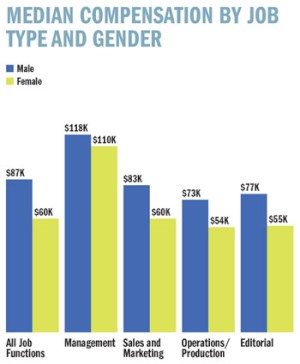
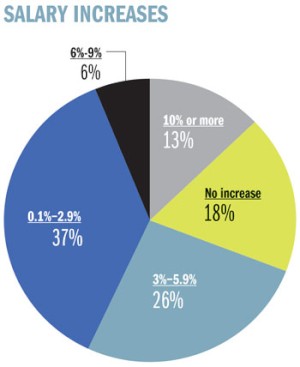
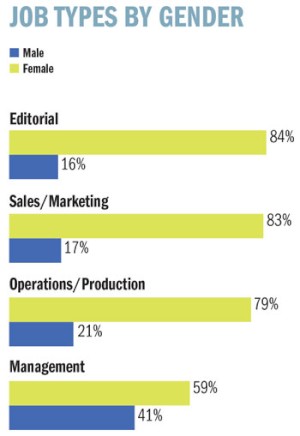
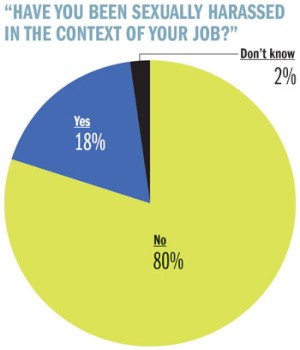
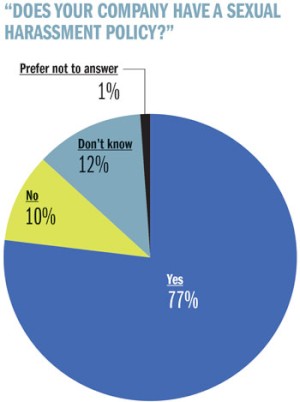
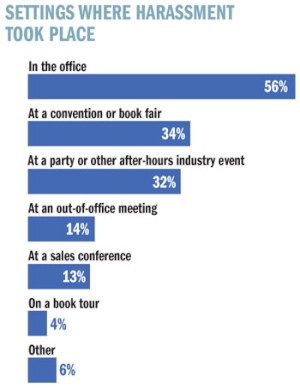
No comments:
Post a Comment